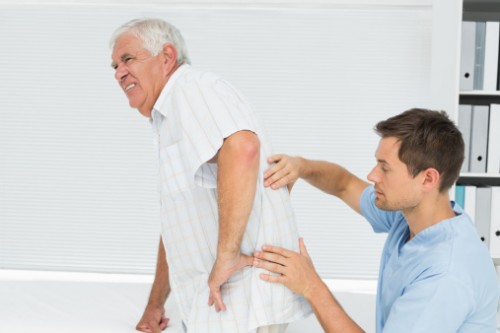10 Tips for Avoiding Back Pain Caused by Yard Work
Do you work hard to make your yard the envy of your neighbors? Or are you a reluctant gardener just trying to maintain the minimum standards of the neighborhood? No matter which type of homeowner you are, one thing holds true – gardening and yard work can be a real pain!
One of the most common complaints following a few hours of yard work is lower back pain. Weeding, mowing, digging, raking, planting and mulching can wreak havoc on your back muscles, and if you’re not careful it’s easy to strain or pull the muscles in your back.
 Dr. Brian Morrison, President & Clinical Director of Morrison Chiropractic and Adjunct Faculty Member at the University of Maryland School of Medicine, is very familiar with the back pains created by summer gardening. Every summer his practice sees an uptick in patients complaining of back pain from yard work. He recommends following these 10 tips to help you keep your back in good shape all summer long.
Dr. Brian Morrison, President & Clinical Director of Morrison Chiropractic and Adjunct Faculty Member at the University of Maryland School of Medicine, is very familiar with the back pains created by summer gardening. Every summer his practice sees an uptick in patients complaining of back pain from yard work. He recommends following these 10 tips to help you keep your back in good shape all summer long.
- Warm Up. Before beginning; take a few minutes to warm up your muscles by doing some dynamic warm up exercises. These include going for a brisk 5 – 10 minute walk around the yard, jumping jacks, walking lunges and arm circles.
- Hydrate. Muscles need water to function optimally. When you maintain your body’s water levels during use, you allow your muscles to coordinate with each other properly and support your physical activity. Adequate water levels in your body can help prevent the onset of muscle cramps or spasms and help prevent dehydration.
- Mix It Up. Vary your gardening tasks each time. Do a little pruning work, raking, bending work, digging, etc. Don’t continuously perform any particular activity for a long period.
- Mowing. Leaning forward as you push the lawn mower can strain your back. Be sure to maintain proper posture and push with your arms and legs instead of your back.
- Weeding. Bending over at the waist for prolonged periods is a sure way to cause your back muscles to start complaining. Kneel on a rubber gardening mat, sit on a wheeled gardening stool, or sit directly on the ground instead. Make sure you have all your tools close at hand.
- Lifting. When lifting bags of dirt, mulch or potted plants, keep your back straight and bend with your knees and hips (not your back) when reaching down. The power for your lift comes from your buttocks and legs. If you are picking up piles of grass, leaves or other yard waste, make the piles small to decrease the weight.
- Raking. Most people use the rake with their dominant hand only. This causes one side of your body to be overused. Try switching sides every few minutes, even though it will feel awkward. Your back, neck and arms will thank you.
- Wear Supportive Shoes. Yard work can put a lot of strain on your feet and legs. Good foot and arch support can stop some of that strain from reaching your back. Ditch the sandals and flip-flops and opt for a supportive pair of shoes instead.
- Take Breaks. Taking your time will make it less likely for injuries to occur. Pushing yourself to the point of exhaustion can cause you to get sloppy with good posture and lifting techniques, setting you up for injury.
- Outsource. Consider hiring a local student to do the heavy work that strains your back. Lots of young people can’t find summer jobs and one may be more than willing to spend a few hours a week working for you. As an added bonus, you might just turn them into a gardener for life!
What can you do if you follow all of these tips and still wind up with low back pain? Dr. Morrison recommends conservative treatments including:
- Heat and/or ice treatments.
- Exercise, stretching techniques, chiropractic care or physical therapy to repair and strengthen muscles.
- Lifestyle changes such as weight loss and regular exercise.
- Propping pillows behind your back and under knees when resting to take pressure off of your lower back.
An adjustable bed from Easy Rest may also help with the symptoms of low back pain. When you rest and sleep in our adjustable bed, you’ll be able to find just the right position to take the pressure off your back pain with the push of a button. Our popular massage feature can help you relax and drift off to sleep, allowing your body to work on repairing itself. Our optional heat feature allows you to add heat to your lower back without the need of additional heating pads.
Once your back is feeling better you’ll be surprised at how often you’ll use your Easy Rest adjustable bed for everyday activities such as watching television, working on the computer or reading.




